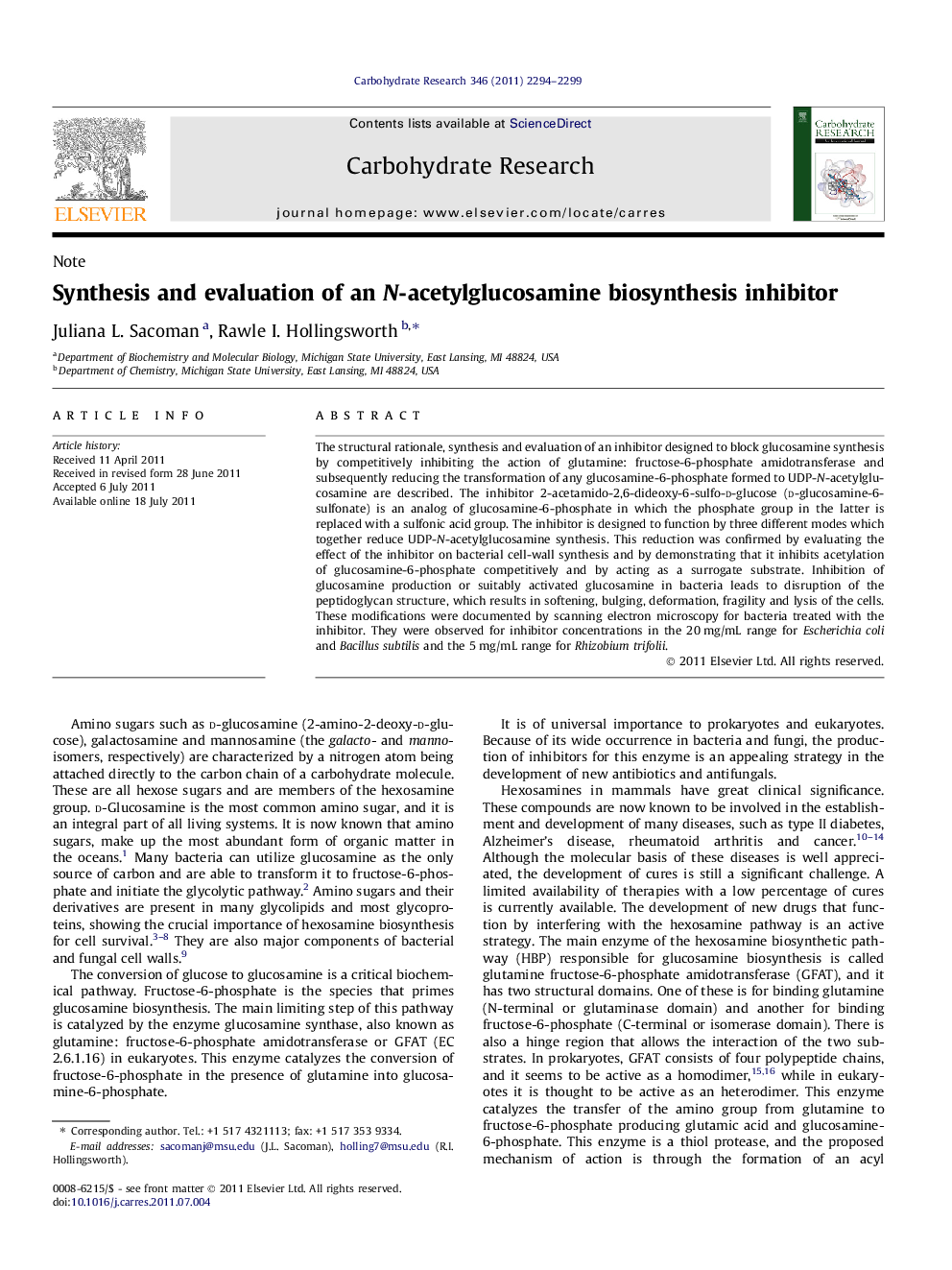| کد مقاله | کد نشریه | سال انتشار | مقاله انگلیسی | نسخه تمام متن |
|---|---|---|---|---|
| 1390481 | 983078 | 2011 | 6 صفحه PDF | دانلود رایگان |

The structural rationale, synthesis and evaluation of an inhibitor designed to block glucosamine synthesis by competitively inhibiting the action of glutamine: fructose-6-phosphate amidotransferase and subsequently reducing the transformation of any glucosamine-6-phosphate formed to UDP-N-acetylglucosamine are described. The inhibitor 2-acetamido-2,6-dideoxy-6-sulfo-d-glucose (d-glucosamine-6-sulfonate) is an analog of glucosamine-6-phosphate in which the phosphate group in the latter is replaced with a sulfonic acid group. The inhibitor is designed to function by three different modes which together reduce UDP-N-acetylglucosamine synthesis. This reduction was confirmed by evaluating the effect of the inhibitor on bacterial cell-wall synthesis and by demonstrating that it inhibits acetylation of glucosamine-6-phosphate competitively and by acting as a surrogate substrate. Inhibition of glucosamine production or suitably activated glucosamine in bacteria leads to disruption of the peptidoglycan structure, which results in softening, bulging, deformation, fragility and lysis of the cells. These modifications were documented by scanning electron microscopy for bacteria treated with the inhibitor. They were observed for inhibitor concentrations in the 20 mg/mL range for Escherichia coli and Bacillus subtilis and the 5 mg/mL range for Rhizobium trifolii.
Figure optionsDownload as PowerPoint slideHighlights
► The synthesis of a new hexosamine synthesis inhibitor is described.
► GlcNAc synthesis inhibition was demonstrated by disrupting bacterial cell wall synthesis.
► The functions of three enzymes in the hexosamine biosynthetic pathway should be inhibited.
Journal: Carbohydrate Research - Volume 346, Issue 14, 18 October 2011, Pages 2294–2299